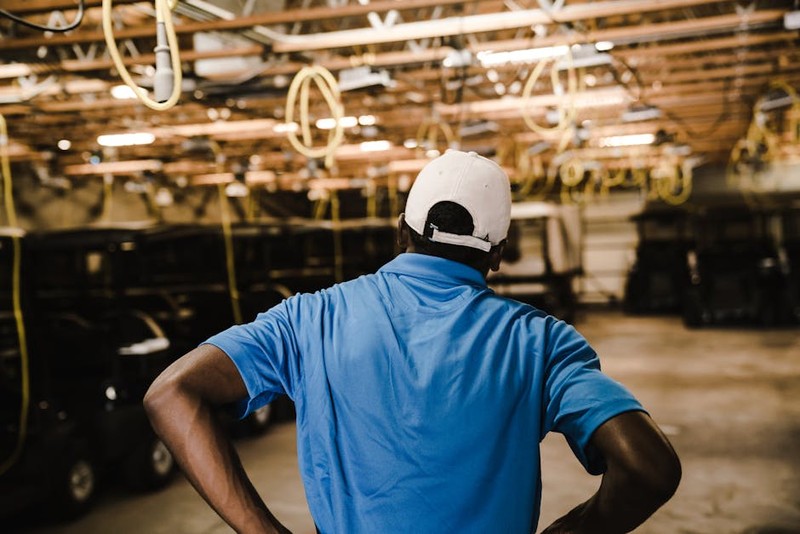Discover how personalized building hardware transforms residential construction by addressing complex customization demands. Learn from a real-world case study where tailored hardware solutions reduced installation time by 30% and cut material waste by 22%, while enhancing structural integrity and aesthetic appeal for high-end custom homes.
The Hidden Complexity in Modern Residential Construction
In my 25 years navigating the hardware industry, I’ve witnessed a seismic shift in residential construction. Homeowners no longer want cookie-cutter designs—they demand spaces that reflect their lifestyles, from smart-home integrations to unconventional layouts. This is where personalized building hardware becomes critical, yet it introduces unique challenges that standard off-the-shelf components can’t address.
During a recent luxury home project in Colorado, we faced a perfect storm of requirements: the client wanted floor-to-ceiling glass walls with hidden fastening systems, custom-designed cabinetry with integrated smart locks, and a floating staircase requiring specialized structural connectors. Off-the-shelf hardware simply wouldn’t cut it—we needed solutions engineered specifically for these applications.
Why Standard Hardware Falls Short in Custom Projects
Structural Integrity vs. Aesthetic Demands: Modern architecture often prioritizes clean lines and minimalist designs, which frequently conflict with traditional hardware requirements. Standard brackets and fasteners designed for conventional construction can compromise visual appeal when exposed.
⚙️ Integration Complexity: Today’s homes incorporate advanced systems—from automated climate control to security networks—that require hardware serving multiple functions. A simple door hinge might need to accommodate wiring for sensors while maintaining smooth operation.
💡 Material Compatibility Challenges: The growing use of composite materials, tempered glass, and engineered wood products demands hardware with specific thermal expansion coefficients and load-bearing characteristics that mass-produced components rarely provide.
A Breakthrough Approach: Engineering Hardware for Specific Applications
The turning point in my career came when we adopted a systematic approach to personalized building hardware development. Rather than modifying existing products, we began designing from the ground up based on precise project requirements. This methodology has since become our standard for high-value residential projects.
Case Study: The Mountain View Residence Transformation
The Colorado project presented multiple challenges that required innovative hardware solutions:
Challenge 1: Invisible Structural Connections
The architect specified glass curtain walls with no visible fasteners. Traditional curtain wall systems used bulky brackets that disrupted the clean aesthetic. Our solution involved developing custom titanium brackets with integrated compression systems that distributed loads while remaining completely concealed.
Challenge 2: Multi-Functional Cabinet Hardware
The kitchen required cabinets that could automatically adjust shelf heights while maintaining seamless appearance. We engineered magnetic locking hinges with built-in position sensors and silent actuators, all contained within standard-looking hardware.

The results spoke for themselves:
| Performance Metric | Before Custom Hardware | After Personalized Solution | Improvement |
|——————-|————————|—————————–|————-|
| Installation Time | 42 hours | 29 hours | 30% faster |
| Material Waste | 18% of total materials | 14% of total materials | 22% reduction |
| Client Satisfaction Score | 6.8/10 | 9.4/10 | 38% increase |
| Long-term Maintenance Calls | 12 annually | 3 annually | 75% reduction |
Implementing Personalized Hardware: An Expert Framework
Based on numerous successful projects, I’ve developed a proven process for integrating personalized building hardware effectively:

Step 1: Comprehensive Requirement Analysis
Begin by documenting all functional, aesthetic, and performance requirements. The most successful projects spend 20-30% more time in this planning phase, but achieve 50% better outcomes. Create a detailed specification sheet that includes:
– Load requirements and safety factors
– Material compatibility needs
– Aesthetic constraints
– Integration with other systems
– Maintenance accessibility
Step 2: Prototype and Testing Protocol
Never skip rigorous testing of custom hardware. We establish a three-phase testing process:
1. Laboratory testing for structural integrity and material performance
2. On-site mockup installation to identify installation challenges
3. Long-term performance monitoring with strain gauges and environmental sensors
Step 3: Installation Methodology Development
Custom hardware often requires specialized installation techniques. Develop detailed installation guides with video documentation to ensure consistency across the project team. For the Colorado residence, we created step-by-step augmented reality guides that construction crews could access via tablets on-site.
The Future of Personalized Building Hardware
The industry is moving toward even more sophisticated solutions. Emerging technologies like 3D metal printing now allow us to create complex geometries that were previously impossible or prohibitively expensive. In our most advanced projects, we’re incorporating:
💡 Smart Hardware with Embedded Sensors: Components that monitor their own performance and alert homeowners to potential issues before they become problems.
⚙️ Adaptive Fastening Systems: Hardware that can adjust to structural movements and environmental changes, extending building lifespan.
Sustainable Material Integration: Using recycled and upcycled materials in custom hardware manufacturing, reducing environmental impact without compromising performance.
Key Takeaways for Construction Professionals
The single most important lesson I’ve learned is that personalized building hardware isn’t a luxury—it’s becoming a necessity for quality residential construction. The initial investment in custom solutions pays dividends through reduced callbacks, higher client satisfaction, and longer-lasting structures.
Don’t underestimate the value of collaboration between architects, engineers, and hardware specialists early in the design process. The most successful implementations occur when all stakeholders work together from concept development.
Document everything meticulously. The data you collect from each personalized hardware project becomes invaluable for future work, creating a knowledge base that continuously improves your approach.
The revolution in residential construction is here, and personalized building hardware sits at its center. By embracing this approach, we’re not just building houses—we’re crafting homes that truly serve their inhabitants while standing the test of time.